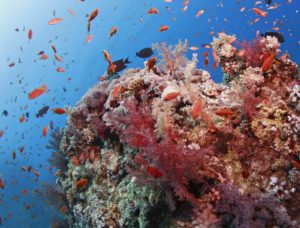The United Nations has designated May 22 annually as the International Day for Biological Diversity. The day commemorates the day on which the UN Convention on Biological Diversity was adopted in 1992 in Nairobi, Kenya.

Biological diversity, as we all know, is of tremendous importance. Our lives depend on it in dozens of ways, from providing our food to cleaning our air and water and providing us recreation and inspiration. However, as we all also know, biodiversity is generally sacrificed to the more direct and immediate demands of the economic system.
The creation of the Convention on Biological Diversity was a giant step forward in recognizing and valuing those aspects of nature’s bounty that typically lie outside the economic system. The Convention actually entered into force on December 29, 1993, after it had been ratified by at least 30 nations. Today, 196 countries are parties to the convention, including the European Union (adding 28 countries to the list). The U.S. is one of only a handful of countries that has not joined the convention, despite being a leader in its origin and content. The U.S. acts in accordance with the convention, but the Senate has never taken up the necessary action to ratify U.S. commitment.
The convention proclaims that “conservation of biological diversity is a common concern of humankind,” and it lists three specific objectives as “the conservation of biological diversity, the sustainable use of its components and the fair and equitable sharing of the benefits arising out of the utilization of genetic resources….”
The value of biodiversity is enormous. At least 40% of the world’s economic productivity relies directly on biological resources; in developing countries, that percentage is much higher. Estimating the economic value of biodiversity as a proxy for its total value has been covered in thousands of analyses. A 2012 paper lists 1350 individual valuations, covering 22 different ecosystem services across 10 biomes. Total average economic value, in international-dollars/hectare/year, ranges from a high of $352,000 for coral reefs to a low of $491 for the open ocean. The second highest value exists in coastal wetlands, at just under $194,000.

A worthwhile side note: The UN celebrates the International Day for Cultural Diversity on May 21, the day before their biodiversity day. The juxtaposing of these days may be a coincidence, but their relationship is real. As Gro Harlem Brundtland so famously noted, environmental sustainability is one leg of the three legged stool of global success, along with freedom from want and quality public health.
Despite its increased profile, biodiversity remains under great stress. In its latest global report, the Convention on Biological Diversity notes the status of 55 target elements from the 2011-2020 strategic plan. Of those 55, only 5 are on track for reaching their targets by 2020. Among those five, the only substantive goal is protecting 17% of the earth’s land and freshwater ecosystems.
So, biodiversity conservation has a long journey ahead of it. The International Day for Biological Diversity is one way to keep the importance of this work in the public eye. A new theme is selected each year. In 2018, the theme is “Celebrating 25 Years of Action for Biodiversity.” Let’s hope that in 25 more years, there will be much more to celebrate.
References:
Convention on Biological Diversity. 1992. Convention on Biological Diversity. Available at: https://www.cbd.int/doc/legal/cbd-en.pdf. Accessed May 22, 2018.
Convention on Biological Diversity. Global Biodiversity Outlook 4. Available at: https://www.cbd.int/gbo/gbo4/publication/gbo4-en.pdf. Accessed May 22, 2018.
Convention on Biological Diversity. International Day for Biological Diversity 2018. Available at: https://www.cbd.int/idb/2018/. Accessed May 22, 2018.
de Groot, Rudolf et al. 2012. Global estimates of the value of ecosystems and their services in monetary units. Ecosystem Services 1(1):50-61. Available at: https://www.sciencedirect.com/science/article/pii/S2212041612000101. Accessed May 22, 2018.
